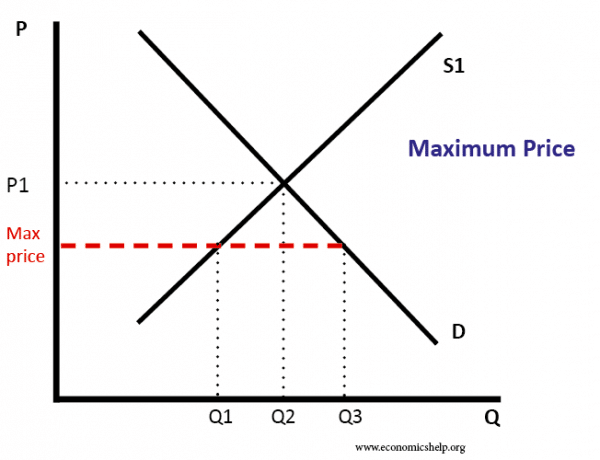More specifically it is defined as an intervention to raise market prices if the government feels the price is too low.
Price floor definition economics example.
Drawing a price floor is simple.
Governments usually set up a price floor in order to ensure that the market price of a commodity does not fall below a level that would threaten the financial existence of producers of the commodity.
It tends to create a market surplus because the quantity supplied at the price floor is higher than the quantity demanded.
A price floor is an established lower boundary on the price of a commodity in the market.
A price floor is a minimum price enforced in a market by a government or self imposed by a group.
In this case since the new price is higher the producers benefit.
By observation it has been found that lower price floors are ineffective.
It s generally applied to consumer staples.
Price floor has been found to be of great importance in the labour wage market.
Demand curve is generally downward sloping which means that the quantity demanded increase when the price decreases and vice versa.
This control may be higher or lower than the equilibrium price that the market determines for demand and supply.
Similarly a typical supply curve is.
A price ceiling is a maximum amount mandated by law that a seller can charge for a product or service.
This graph shows a price floor at 3 00.
A few crazy things start to happen when a price floor is set.
Simply draw a straight horizontal line at the price floor level.
This lesson will discuss the economic concept of the price floor and its place in current economic decisions.
It will provide key definitions and examples to assist with illustrating the concept.
Price floor is a price control typically set by the government that limits the minimum price a company is allows to charge for a product or service its aim is to increase companies interest in manufacturing the product and increase the overall supply in the market place.

